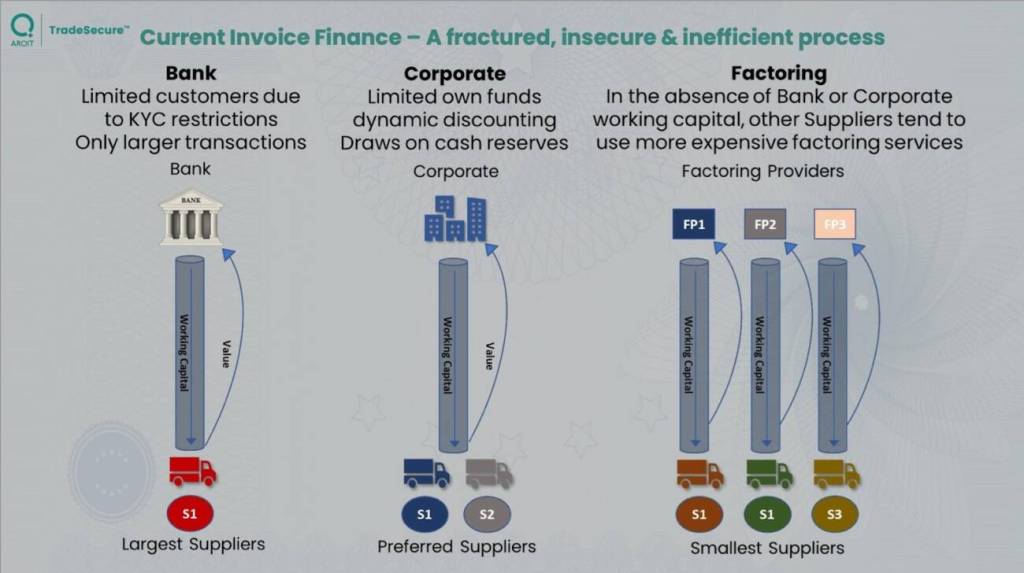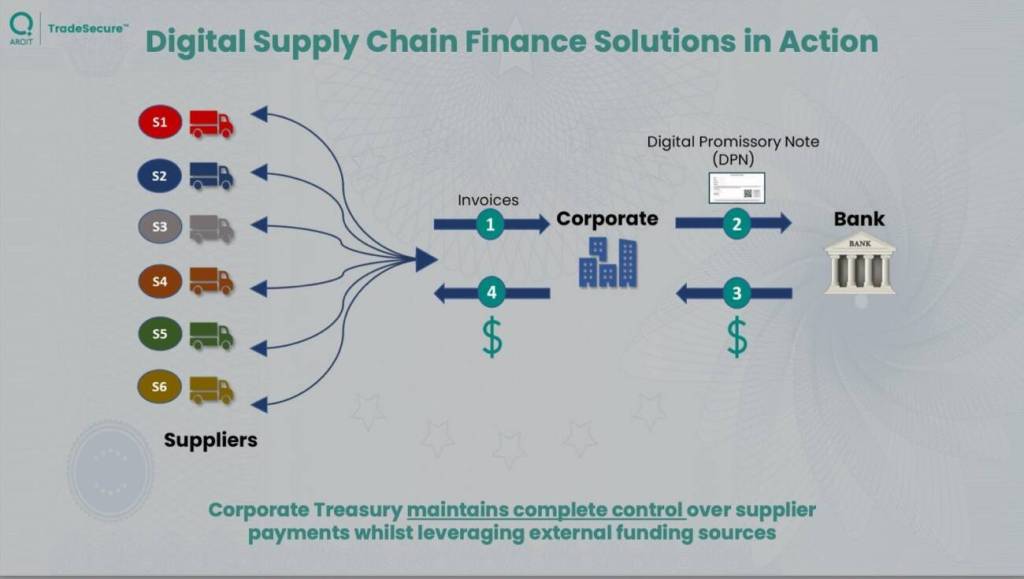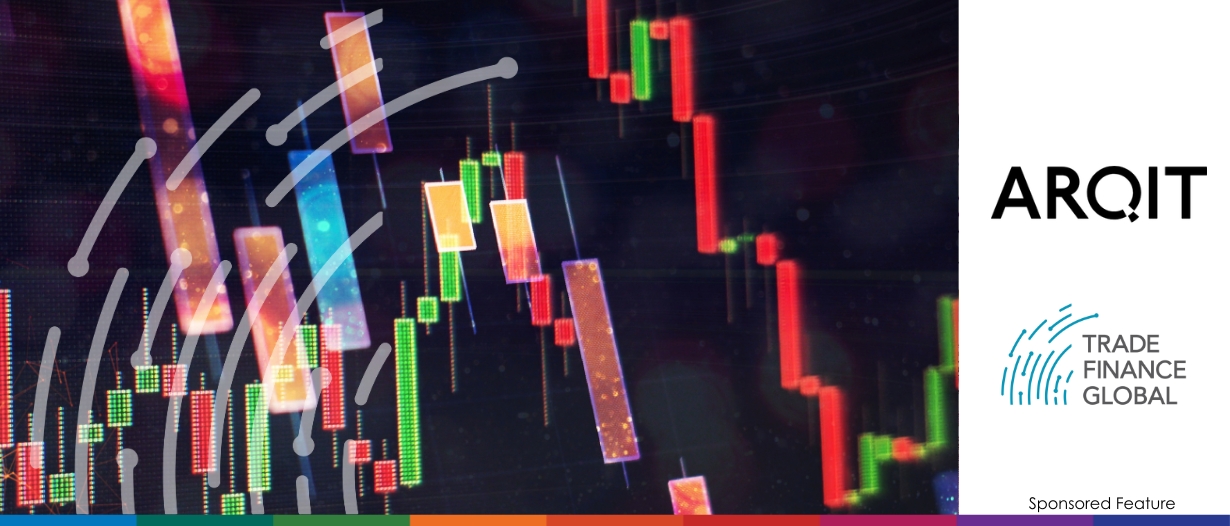Estimated reading time: 7 minutes
The enactment of the Electronic Trade Documents Act (ETDA) in the UK on September 20, 2023, marked an inflexion point in the ongoing digital transformation of international trade. This legislative milestone establishes a techno-legal framework, enabling the electronic exchange of key trade documents.
While the Act’s enactment represents significant progress, it signifies not the end but the commencement of the journey toward a fully digital trade ecosystem. As the world gradually adopts digital supply chains which will facilitate domestic and cross-border trade, the power of technology to integrate the virtual and physical worlds becomes increasingly evident. However, as global interconnectivity grows, so does exposure to the risks of cyber threats.
The UK’s Cyber Security Breaches Survey highlighted that 32% of British businesses encountered a data breach in 2023, with approximately one-third falling victim to cybercrime.
In this episode of Trade Finance Talks, TFG’s Deepesh Patel, spoke with Dominic Broom, Senior Vice President of Working Capital Technology at Arqit, exploring the imperative of striking a balance between the advantages of digital transformation and safeguarding critical data.
The Electronic Trade Documents Act: Bridging the gap between tradition and innovation
Trade is an enduring, age-old industry that has long relied on established rules tailored for a paper-based world – to the degree that using physical trade documents is, in fact, a legal requirement in many jurisdictions – at least for key documentation. However, the enactment of the ETDA signals a transformative shift in this regard. As Broom said, “The coming into force of the Electronic Trade Documents Act has been a seminal moment in the world of trade.”
The ETDA, now allows for digital documents to serve this function, recognising electronic negotiable documents legally recognised in the same way as their paper-based equivalents.
Traditionally, the exchange of negotiable trade finance documents, such as promissory notes or bills of exchange, adhered to principles like “possession” and “delivery,” which presume a physical medium.
Broom added, “What the ETDA has done is to bring existing legislation and case law into the 21st century and enable us to start looking forward. It heralds a new dawn for international trade by simplifying processes and making it accessible for a broader range of buyers and suppliers.”
In addition, this development also helps to encourage global adoption as its impact reaches far beyond the borders of the United Kingdom, given that over 60% of global trade is conducted under English law.
The adoption of the ETDA also sets a precedent for other countries to follow suit and several countries have also adopted, or are adopting, legislation based on the UN Model Law on Electronic Transferable Records (MLETR). Thus, the implementation of the ETDA in the UK heralds the start of the global adoption of digital trade laws on a grand scale.
As Broom noted, “Other G20 countries including France, Germany and the United States, are adopting similar legislation based on the Model Law for Electronic Transferable Records or MLETR. That will provide a common foundational legal framework for the interchange of these electronic documents.”
The ETDA, therefore, translates to major benefits for businesses – opening the door to a new digital age for supply chain finance and, ultimately, creating opportunities to optimise working capital solutions for the end-to-end supply chain.
Transforming data security in trade finance through physics
The digitalisation of international trade marks a remarkable shift in the way goods and financial transactions traverse borders. As the industry embraces an era of digital supply chains facilitated by groundbreaking initiatives like the ETDA, the convergence of global commerce with advanced technologies brings both unprecedented opportunities and heightened challenges.
Arqit, a leader in quantum-safe encryption, and a market-leading technology firm specialising in data security, brings a distinctive approach to the table. The company introduced the world’s first fully scalable cloud-based symmetric key agreement platform capable of creating quantum-safe encryption keys on any number of devices, using zero trust principles.
It’s composed of a group of nodes distributed globally, each of which acts as a local exchange for devices to authenticate and negotiate symmetric encryption keys with other devices on the network.
Broom described it, saying, “We’ve developed a world-leading symmetric key agreement platform that draws on the randomness of the laws of physics. We use that randomness to create encryption keys that safely keep the data of governments, enterprises, and citizens.”
As he emphasised, the encryption technology is applied at the instrument level, creating highly secure versions of negotiable instruments such as promissory notes and bills of exchange. These securely transferable yet fully referenceable instruments introduce a new standard of protection against fraud.
The technology ensures the safety and reliability of digital financial instruments throughout the supply chain financing process. Broom further said, “Our quantum technology addresses all of those key elements of MLETR/ETDA, but it goes even further than those core gateway criteria, such as system reliability.”
TradeSecure: Inverting the supply chain finance pyramid
Supply chain finance has long grappled with inefficiencies, especially concerning funding challenges faced by smaller businesses, often considered the “weakest link” in the chain.

SMEs, burdened by tight balance sheets and geographical complexities, find it challenging to secure funding from traditional sources like banks. The resulting strain on SME working capital leads them to resort to costly financing solutions or even prompts them to avoid supply chain activities altogether.
The ETDA offers a transformative solution to these longstanding hurdles. The Act facilitates the use of digital negotiable instruments (DNIs) as scalable, flexible, and binding promises of payment by a company. DNIs, including digital promissory notes (DPNs) and digital bills of exchange, made possible by ETDA, can easily integrate into supply chain finance programmes, acting as standardised risk transfer mechanisms.
This ‘inversion’ of the current SCF funding structure, unlike traditional approaches that tie funding to the creditworthiness of the smallest supplier, ties funding to the financial standing of the issuer. As Broom noted, “For banks and non-bank financial institutions funding supply chains, DNIs act as a risk transfer mechanism allowing lending to be based purely on the credit standing of the corporate buyer.”
The ETDA, therefore, encourages supply chain finance from the strongest link downwards, thereby inverting the traditional trade finance pyramid. “The ETDA offers the opportunity to transform the traditional supply chain finance mechanism, breaking down those funding silos, improving cash and providing supply chain finance from the strongest link in the chain downwards, thereby stripping out the cost,” he added.
To ensure the secure transfer of DNIs, Arqit developed TradeSecure™, an easy-to-use, legally recognised digital instrument solution that meets the legal criteria outlined in the ETDA. This unique quantum-secured DNI solution is designed to generate and distribute digital negotiable instruments, safeguarding finance supply chains from disruption and fraud while simultaneously improving their cash flow.
So how does Arqit TradeSecure ensure interoperability in a landscape where diverse systems coexist?
The answer lies in the meticulous design of their technology. The process, termed the “minting process,” involves uploading data and authorising signatures through a quantum-secure tunnel, creating a tamper-proof, highly secure tokenised asset.
Broom describes the system’s power from an end-user perspective stating, “The system protects transaction data as it’s transferred between the corporate and the financial institution. It thereby prevents sensitive information from spilling over into the public domain and being revealed both now and in the future. Delivering that standard of data security, allows us to demonstrate a high degree of reliability as people make the transition from paper to digital.”
Arqit’s innovative technology has interoperability as its heart, so can be integrated into diverse trade financing platforms, ensuring quantum-safe security against existing and future cyber threats. Moreover, users benefit from a unique, referenceable, and transferable digital finance instrument that simplifies management compared to traditional paper-based ones.

In essence, DNIs are set to revolutionise supply chain finance, injecting liquidity across the entire supply chain. As DNIs gain wider acceptance, they pave the way for new financing options, which can be completed in real-time rather than days/weeks. Bringing back to life these valuable yet cumbersome instruments in a new and exciting digital format facilitates the opening up of previously untapped liquidity, particularly benefiting smaller exporters in emerging markets.
The ETDA has arrived at the perfect time.
Highlighting Arqit’s commitment to facilitating a smooth transition into the digital era, Broom pointed out, “Now is the time for the industry, businesses, and financial institutions to engage as the commercial world moves to a much more digital future. Our mission at Arqit is to ensure that our solutions are easily consumable, with very limited barriers to entry.”





























